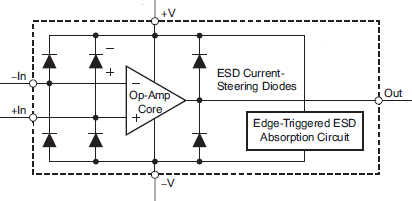Dear Specialists,
My customer is considering LMV824 and has a inqury.
Could you please advise?
How is the output when input is out of Input Commom-Mode Voltage Range?
The condition is Voltage follower.
For example, Vcc=5V,Vin=4.5V
(VCM is from -0.3V to 4.3V, therefore 4.5V is out of spec.)
How is the output?
(1) unstable
(2) normal output (4.5V)
(3) causes satulation
(4) other result
Best regards,
Shinichi


